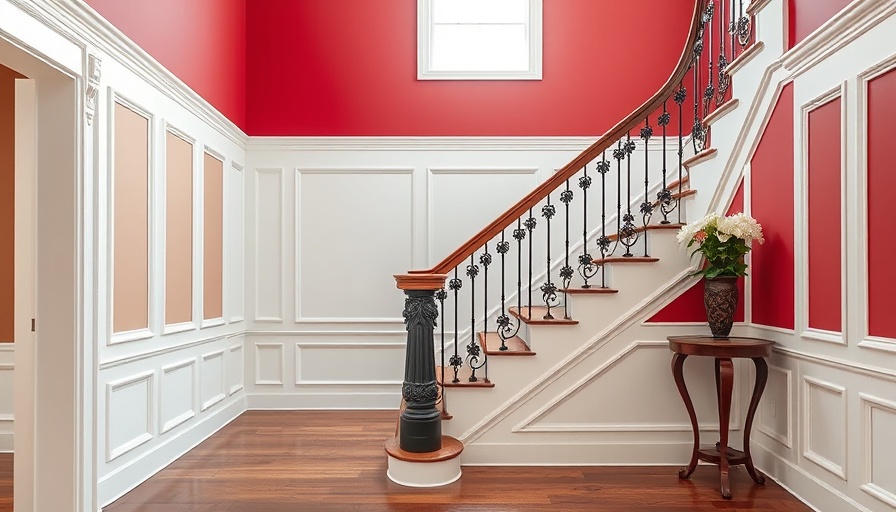
Discovering Wainscoting: A Timeless Wall Feature
Often viewed as a classic touch, wainscoting is much more than just an ornamental feature in modern homes. It is the perfect blend of form and function, originally designed to provide protection while adding a decorative flair to our living spaces. But what exactly is wainscoting, and why has it endured through centuries to remain a beloved choice for homeowners and designers alike?
The Evolution of Wainscoting Design
Wainscoting involves fitting wooden or composite panels on the lower thirds of walls, altering a wall's character while enhancing its durability. While they started as protective fixtures against scuffs and scratches, today’s wainscoting styles can be tailored to fit any aesthetic, from classic beadboard to sleek modern panels.
According to experts like John Durham of Richmond, VA, wainscoting reigns as a versatile tool in a designer’s repertoire. It beautifully blends architectural integrity with artistic flair, making it relevant across various styles: whether characterized by the rustic charm in a Massachusetts cottage or the minimalism of a contemporary loft in the heart of Buffalo, NY.
The Origin of the Term 'Wainscoting'
The nomenclature of this iconic wall feature has its roots in historical craftsmanship. The term "wainscoting" comes from the Middle Dutch word "waghenscote," which means "wagon plank." Originally referenced for the high-quality oak used to line wagons, its application has transitioned into a defining characteristic of home interiors. This transformation allows us not only to appreciate its aesthetic but also to understand its practical origins.
Functional Beauty: Why Wainscoting Matters
Beyond aesthetics, wainscoting offers substantial benefits, such as protecting lower wall surfaces from wear and becoming integral to a cohesive design. It can serve to divide spaces functionally while creating a visual harmony, drawing the eye and anchoring decorative themes. As Robert Mann, founder of Woodworking Specialists in Tucson, AZ, explains, "wainscoting is more than mere decoration; it instills order and focus in a room, often laying the groundwork for the rest of the design elements."
Trends and Styles in Wainscoting Today
Today, wainscoting is customizable to meet the unique needs of any space. From intricate patterns to modern minimalist flat panels, homeowners have a technology at their fingertips that keep traditional craft alive. This adaptability allows for an evergreen appeal that resonates with current trends while holding true to its historical charm. No matter the design preference—contemporary, classic, or eclectic—there’s a wainscoting style for every kind of decorator.
Wainscoting Installation Tips
For those looking to enhance their home with this classic feature, installation can range from manageable projects for DIY enthusiasts to comprehensive undertakings for professionals. The key is to assess your space’s needs: consider wall height, the type of material you prefer, and how much character you wish to inject into your rooms. DIY kits are readily available, but hiring a carpenter might ensure that the intricate details are executed flawlessly, particularly in more elaborate designs.
Conclusion: A Classic Worth Considering
Understanding wainscoting goes beyond simply knowing it as a wall panel; it is embracing its role as a centerpiece that revamps spaces while retaining practical benefits. As trends continue to evolve, this classic wall feature remains steadfast as both a decorative and functional element, giving homeowners not only a way to beautify their spaces but also to instill a sense of style and history in their homes.
If you’re considering home renovation or just love interior design, exploring wainscoting options could be your next great investment in creating the perfect atmosphere in your space.
 Add Row
Add Row  Add
Add 




 Add Row
Add Row  Add
Add 

Write A Comment